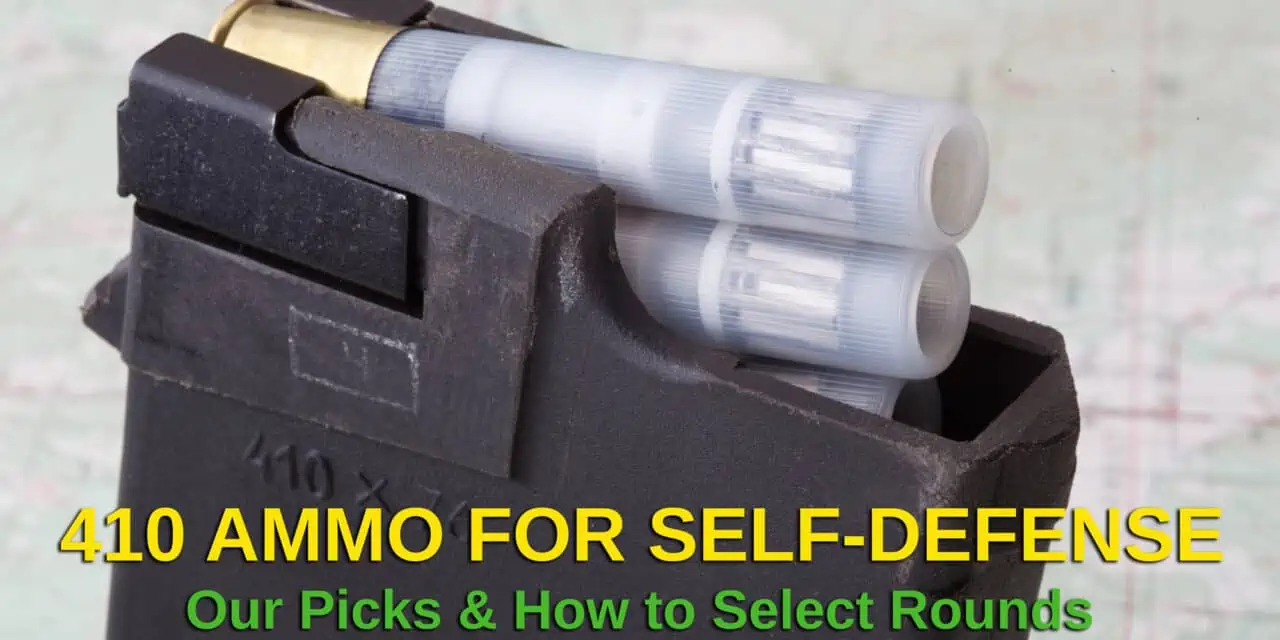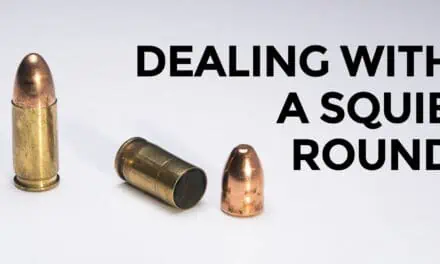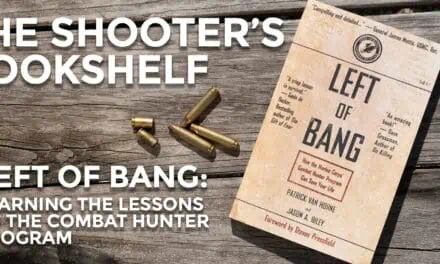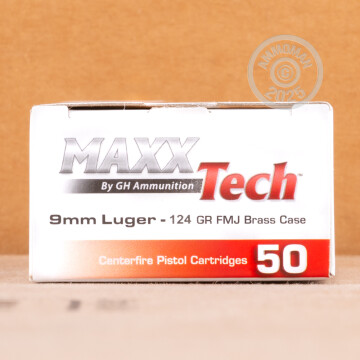When it comes to self-defense ammo for a 410 revolver, you might not be surprised to hear our recommendation isn’t 410 ammo at all. Let us explain.
Pretty much anything other than birdshot fired from a magnum 12 gauge shell will have adequate fight-stopping effect at room distances. 410 shotshells, on the other hand, can be a little tougher to find a good round to use for self-defense. Lower energy and little payload compared to the 12 gauge set us up for a challenge.
Best 410 Self-Defense Ammo – Our Pick
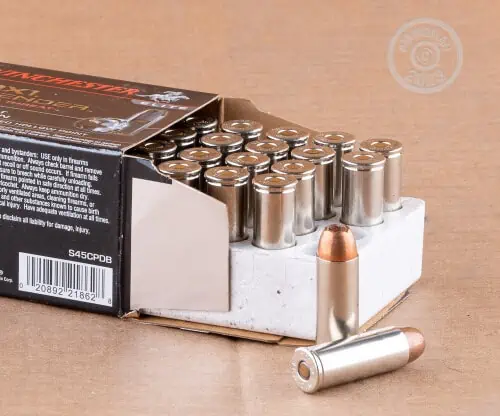
Many of the 410 ammo options on the market are rather questionable in concept and implementation. My recommendations on ammunition are for smoothbore shotguns, which we’ll get to in a moment.
If you have a 410/45 LC revolver, I would recommend loading every chamber with 45 Long Colt hollow point, such as Winchester Bonded PDX1 ammo. This will help ensure both a substantial terminal effect and sufficient accuracy to impact the target in the first place.
The Taurus Judge or S&W Governor, firearms not known for match accuracy due to long cylinders causing excessive freebore, are still plenty good to hit a silhouette out to 25 yards. That’s more than we can say for most shot or slug loads. Further, since shotgun loads are optimized for much longer barrels, 45 LC would produce less flash and more actual projectile velocity than nominally more powerful shotshells.
Finally, shot and slick brass 45 Long Colt cases extract more reliably than longer, more textured plastic shotshell. That is extremely important for guns which fire long, skinny cases that are extracted with a small, thumb-operated star ejector.
 For 410 Shotguns: Avoid Birdshot
For 410 Shotguns: Avoid Birdshot
To begin with, birdshot is off the table for defensive use. It lacks penetration. You can’t even rely upon it on to produce a stop with a face shot due to ballistic glasses and leather jacket collars protecting the softest parts of the head and neck.
Even BB sized shot is too light for reliable stopping effect: each pellet is only 6 grains, which is as light as the heaviest airsoft plastic pellet. Granted, the lead pellet moves faster, but it’s still insufficient to reach vital organs. Better than nothing, but far less useful than a properly picked defensive load.
#4 Buck – An Option?
Next up is #4 buckshot, with 24-caliber 20-21 grain pellets starting somewhere in the 950-1000 feet per second velocity range. While this is just over half the energy of a 22 Short bullet, the arrival of 9 of them at once might make a difference up close. With minimal ballistic coefficient, even #4 buck will lose velocity and penetration rapidly. It is a reasonable choice for a coyote-sized foe but still a bit light for a human opponent. #4 buck seldom delivers tight patterns from 410 bore, and bare gel penetration is in the 8-13in range…not terrible, but hardly sufficient to reach vitals reliably.
00 Buck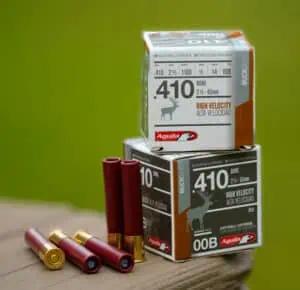
00 loads like Fiocchi’s Field Dynamics are a special case for 410 shotguns, hearkening back to milti-bullet loads in muskets because the pellets come close to being bore-size. In theory, being stacked up in a line should promise tight patterns, but three factors mess with this.
First, the projectiles are not slightly sub-caliber, and so align true better when contained in a shot cup. Some American manufacturers load them that way, most foreign makers do not.
Second, even plated lead pellets deform against each other on firing, and unplated pellets even more so. That makes their flight paths less consistent, and likewise makes the penetrating paths in flesh less predictable.
Finally, because they exit the bore in a sequence, each subsequent projectile is affected by the recoil displacement. All those factors aside, we can expect a near “one hole” pattern at 5 yards. At 12-15 yards, a hand-sized spread provides ideal separation, and ultimately, you can expect 18-20 yard effective range. Depending on the number of pellets, from 3 to 5, velocity can vary from low 900s to about 1150 fps. Penetration also varies, generally staying between minimally acceptable 12″ and excellent 16″ — and that performance spread can apply even to pellets within the same shotshell.
Slugs
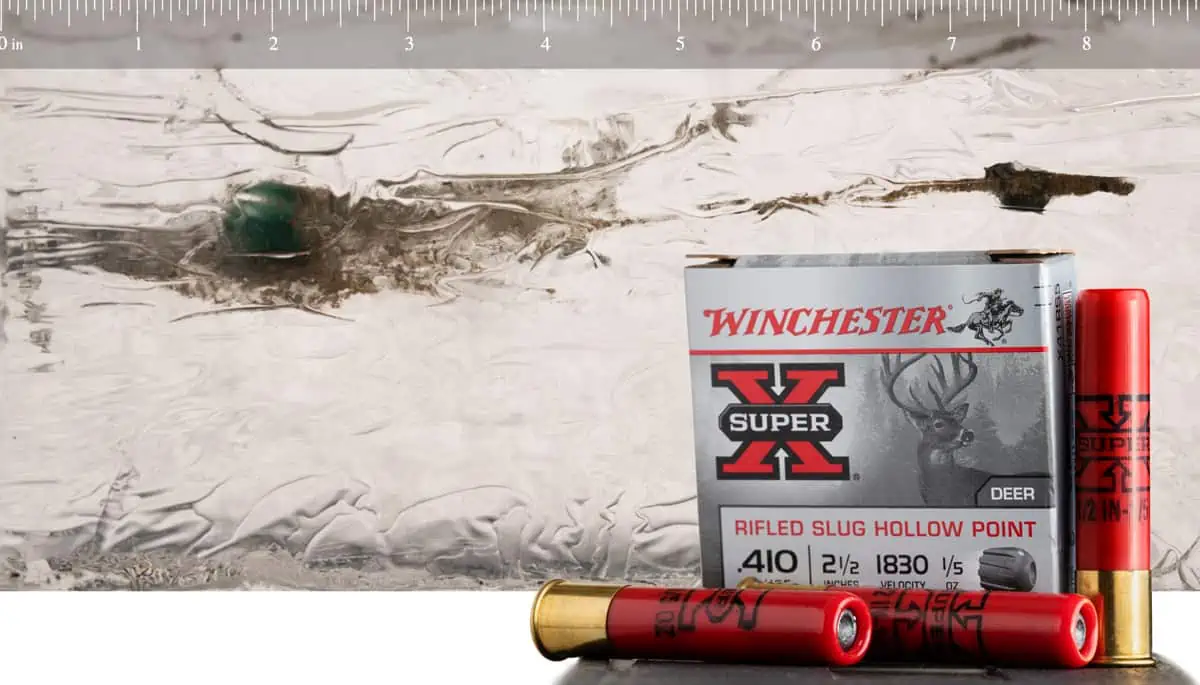
If multiple projectiles favor the largest pellet size, what of slugs? Turns out that the standard 1/5oz Foster slugs, despite respectable kinetic energy numbers and typically good accuracy, yield very poor penetration. 4-6″ penetration with total fragmentation of the light thimble-shaped lead slug is great for a coyote but light for anything but a neck or a face hit on deer or hominid.
Brenneke slugs, a little heavier at 1/4oz and a bit harder, produce through and through penetration on most torso shots with modest expansion, typically to about 50 caliber. While that improves blood trails in deer hunting, it poses an over-penetration potential in a residential firefight. Still, if you need an effective hit beyond 20 yards, as could be the case in a more rural environment, Brenneke slugs are the way to go in 410. At this point, having either notch and post iron sights or a red dot on the shotgun would greatly improve the hit probability.
Combo Loads
The last type of munitions are “buck and ball”, or combination loads. Hornady’s Critical Defense 410 ammo might be the most advertised of them. It has a slug followed by two buckshot pellets. Winchester also makes PDX1 Defender with three copper plated disks and 16 BB pellets. The trouble with both of these, at least from shotguns, is the inconsistent patterns and lack of stabilization for either the slug or the disks. Both loads were designed for rifled bores, but even then PDX1 BBs spread widely. From smooth bores, BBs group normally while disks fly less predictably but generally stay close enough at 5-7 yards. Hornady load keeps the two 00 pellets together, while the slug impacts sideways or butt-on. It won’t expand or fly straight for long.
In sum, I would look at 00 buck loads, with the preference given to 4-pellet loads as the sweet spot for velocity and mass. These are not particular about chokes, performing similarly from cylinder bore and full choke typical of older 410 shotguns. Why bother with the small bore scattergun in the first place? Less recoil and lower muzzle blast than either 12 gauge or 20 gauge, and usually lighter and more compact guns too. Some of us already own a 410 and would prefer to spend limited funds on ammunition — but that’s only true for experienced shooters. For a novice shotgun user, the difference in price between 410 and 20ga ammunition necessary for training would soon pay for a new or used shotgun.

